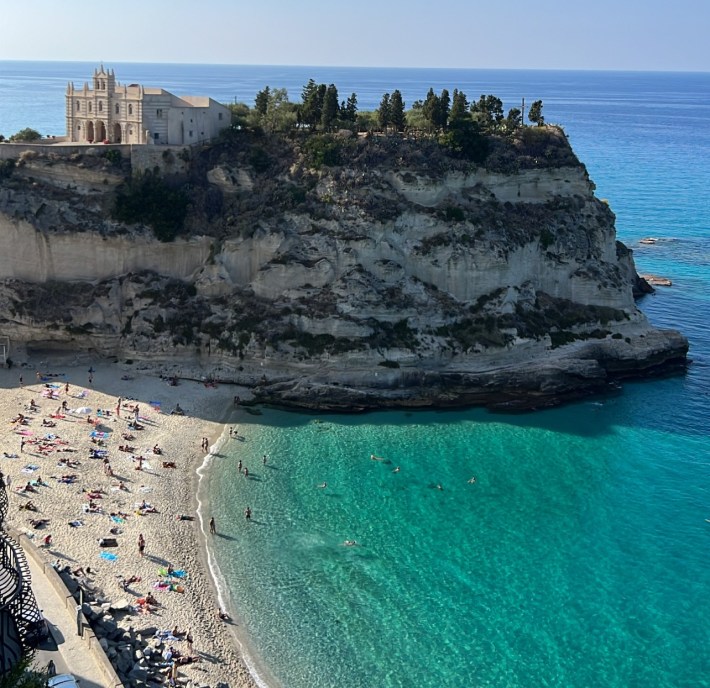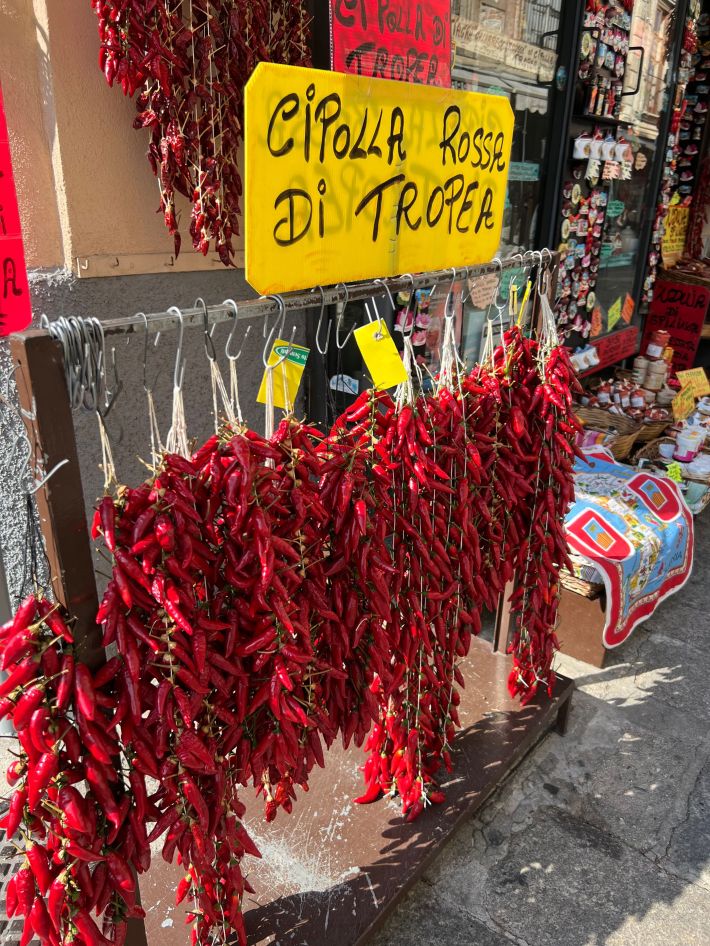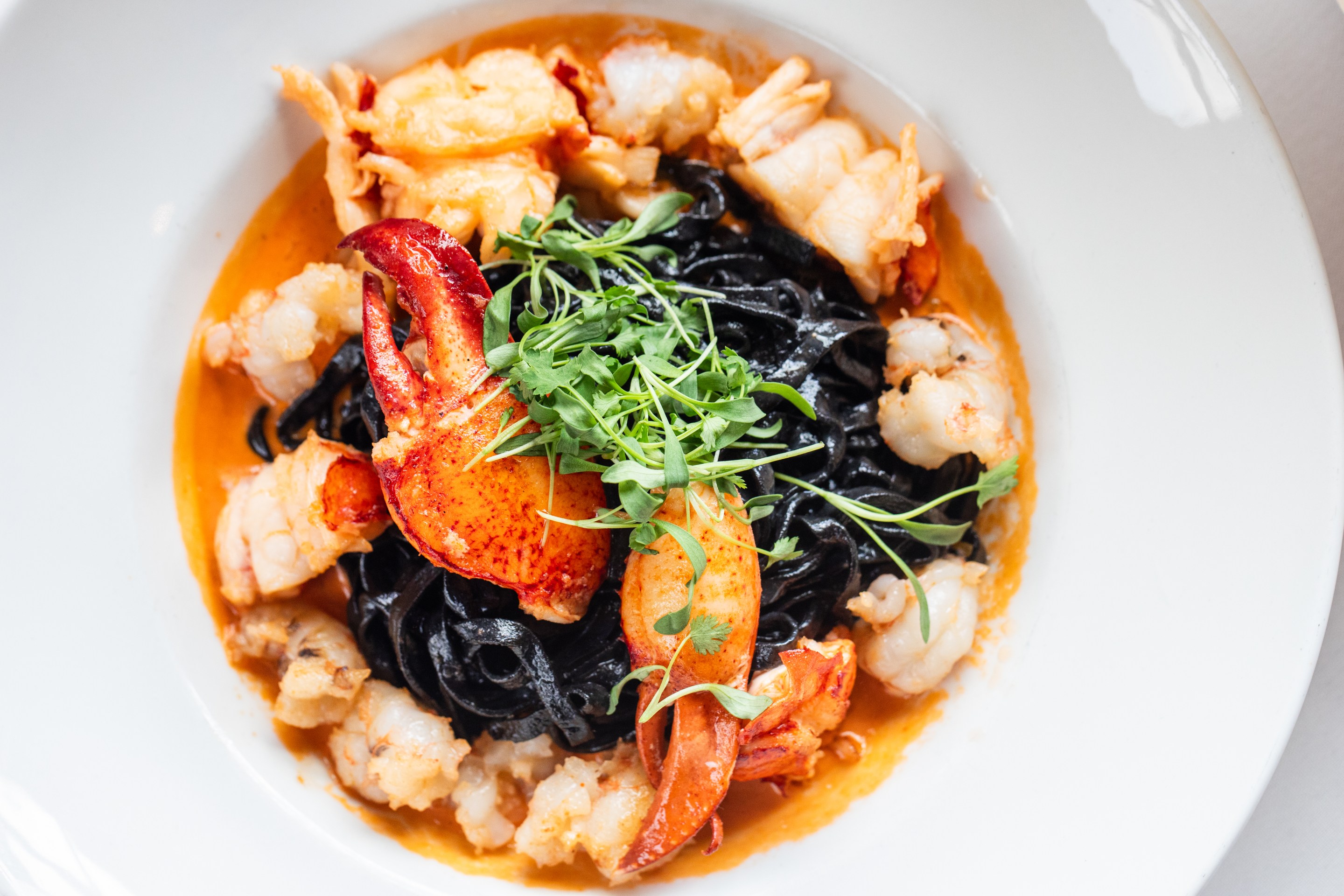Named the “Pearl of the Tyrrhenian Sea,” located on a stretch of coastline called “The Coast of the Gods,” and having been awarded, a few years back, the title of “The Most Beautiful Village of Italy,” Tropea, a seaside town in Calabria, could easily disappoint by not living up to the very high expectations that such majestic superlatives convey. But short of leaving anything to be desired, Tropea, at once humble and divine, fills your heart with desire.
A trip to this scenic Calabrian paradise caused me to consider writing a break-up letter to NYC, my home base, and googling, “How quickly can I get Italian citizenship?”
Tropea boasts some of the best beaches in Italy, minus the crowds. White sand and turquoise water merge in a sea of tranquility; dramatic cliffs and breathtaking sunsets complete this idyllic setting. Tourism is mostly comprised of Italians from other regions, other Europeans, and Argentinians — who are known for their Italian background and easily identified by their “musical” accent.

A stroll through Tropea’s historic center, perched on a cliff, reveals spectacular views over the Tyrrhenian Sea, ancient palazzos, boutique shops, and restaurants, as well as Piazza Ercole, the heart of the old town where locals and tourists alike meet to enjoy aperitivi, music, and gelato.
In close proximity to Sicily, this Calabrian town is one where regional Italian cuisine rules cease to exist, and the food lines blur between the best of these two regions. Pasta alla Norma, a traditional Sicilian dish with roasted eggplant and ricotta cheese, is made with Fileja, a Calabrian pasta in the shape of an elongated screw and shares a menu with Pasta alle Cipolle, a Calabrian specialty that uses the prized Tropea onions to accentuate this dish. These red onions, known for their sweetness and versatility, are a staple in the cuisine of this region where they’re grown and can be found cooked in a myriad of ways or simply served fresh with a drizzling of olive oil. Arancini, the popular Sicilian street food made of rice balls usually stuffed, breaded and fried, share a stand with ‘nduja, the Calabrian spicy sausage that’s a specialty of this region.

Dessert follows the same rules, or lack therefor, and traditional Sicilian cannoli can be found on the menu alongside Tartufo di Pizzo, an ice cream dessert that bears resemblance to a truffle and originated in the Calabrian city of Pizzo. The latter, usually made in the flavors of chocolate with hazelnut, has a saucy center that oozes out when cut into and is dusted in cocoa powder.
Combining affordable boutique hotels, mouthwatering gastronomy, magnificent scenery, and charming, hospitable locals, this seaside resort is the perfect place for experiencing the joys of “il dolce far niente” (the sweetness of doing nothing).
Where to Stay
Located a few blocks from the historic center, this affordable boutique hotel spares no attention to detail in its accommodations and delivers Italian hospitality at its best
This five-star hotel housed in a 16th century convent and overlooking the Coast of the Gods offers splendid, terraced gardens, a restaurant and lounge, infinity pool, and sailboat excursions.
Where to Eat
A seafood-focused restaurant in the historic center will also accommodate any dietary restrictions with off-the-menu special requests such as vegetarian pasta with Sicilian Pistachio Cream. It's also the perfect spot for enjoying a Truffle di Pizzo.
Dining at this restaurant-pizzeria at one of the outdoor tables makes you feel like you’re having a meal in a friend’s courtyard. A must-try is the Tropea salad made of the cipolla rossa, tomatoes, and olives drizzled in olive oil.







